Catharina Graf
| Sport | Golf |
| University | University of Indianapolis |
| Major | Bachelor in Finances |
| Sport | Golf |
| University | University of Indianapolis |
| Major | Bachelor in Finances |
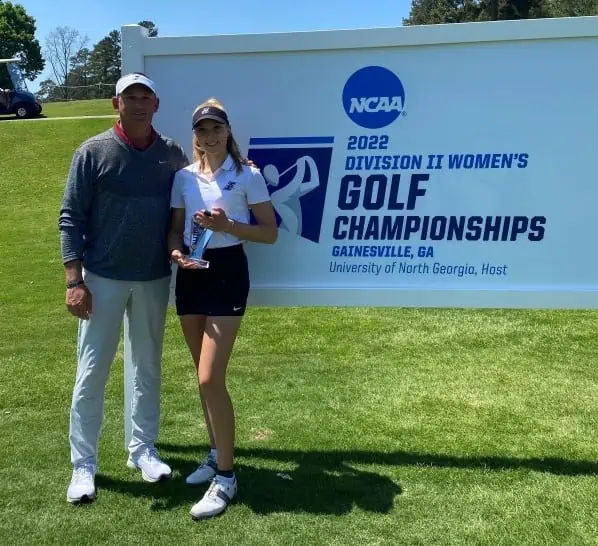
From a young age, I had the big goal of playing college golf to be able to combine my sport with university. Also, most of my older friends went to the US to play college golf. This only strengthened my dream because I saw the opportunities that are offered in the US as a student-athlete in terms of training, tournaments, equipment but also support on the academic side.
A typical day as a student-athlete for me starts at 7 a.m. with a team lift. After that, I take a quick shower and have breakfast to get to my first lecture on time. The times for lectures vary depending on the day and semester. After all lectures are finished and I could already do the first assignments in the library, I go to lunch with my team at our sushi bar. Afterwards we go to practice where we either do drills or play for score to prepare for the next tournament. After practice, I usually eat dinner already so I can study some more afterwards. After a few stretching and mobility exercises, the day ends for me around 10 pm.
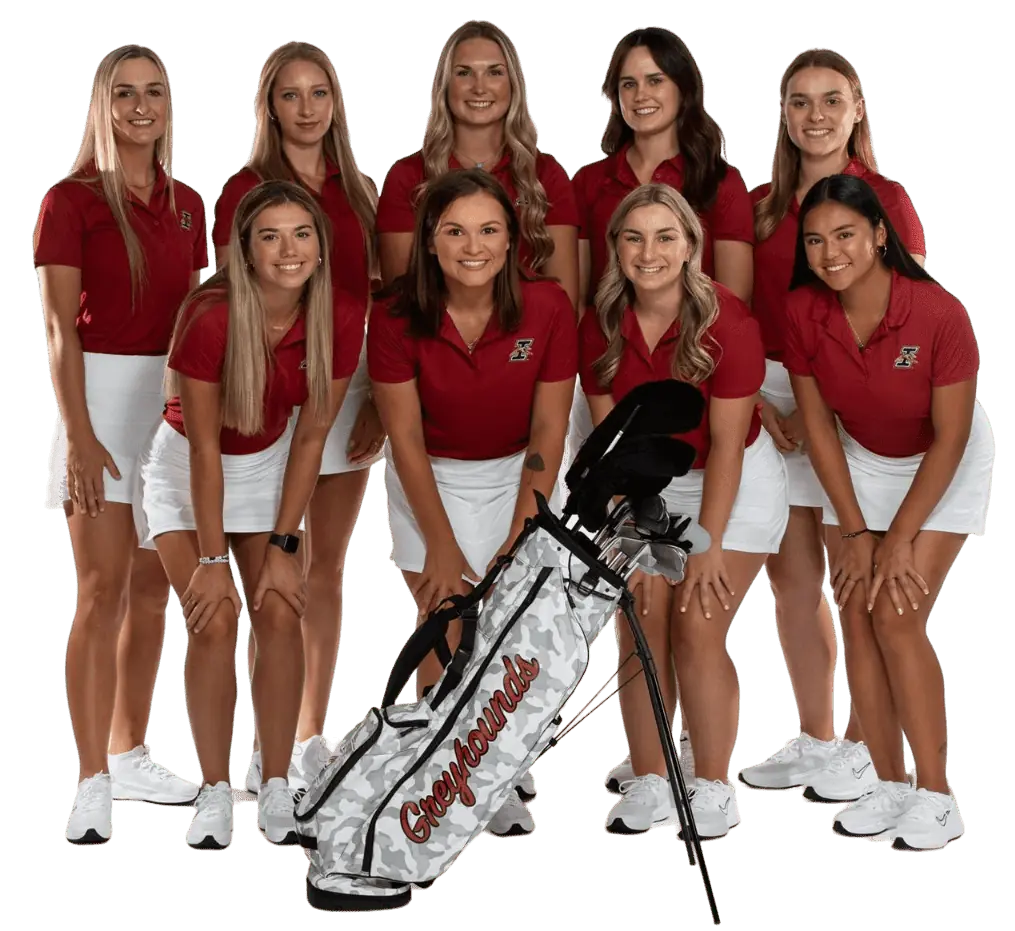
At the University of Indianapolis, I am majoring in Finance and minoring in Analytics. I usually take five courses (15 credits) which consist of Major and Minor Requirements as well as General Education Requirements. Most of the courses consist of Papers, Tests, and Exams, there are also projects in the advanced courses.
Since my university is private and medium sized, the course size is a maximum of 25 students. This allows for a close relationship with the professor, which is especially important as an athlete if you miss classes due to tournaments. Our professors are very involved, so I can always write to them and ask for support. It is exactly such a good relationship between processors and student-athletes that makes it possible to be successful both on the golf course and in college.
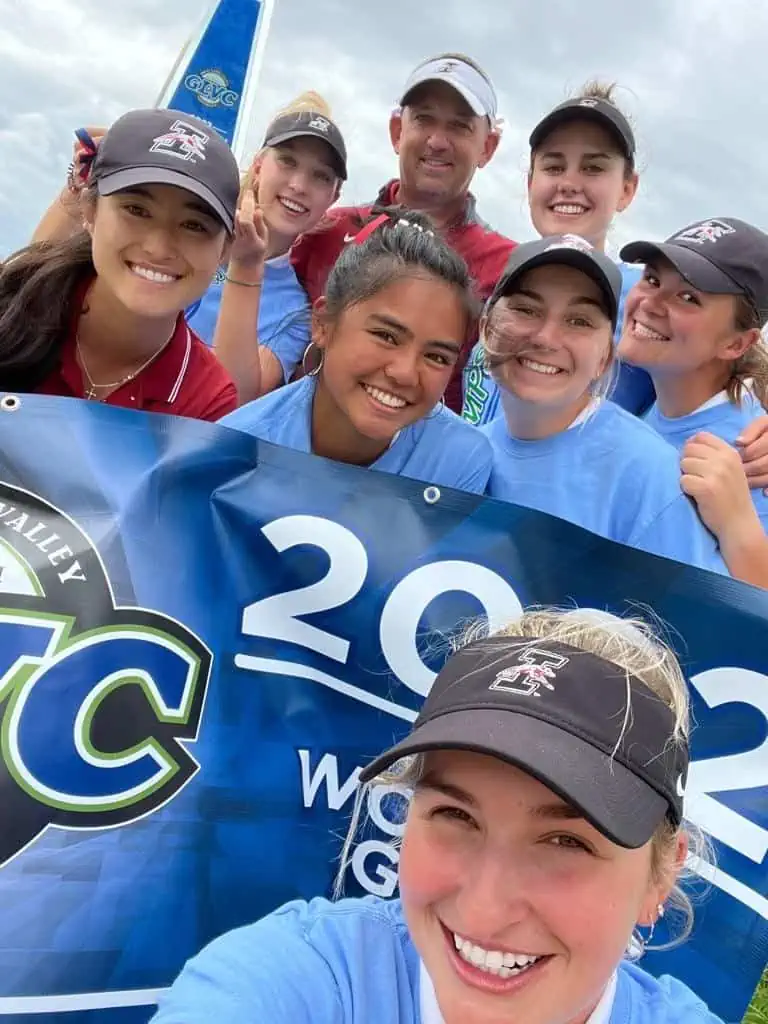
We get a plan for each week with training times. In the fall season, we have strength training twice a week and endurance training once a week. In Spring Season, the endurance training is dropped so we can focus more on golf. For strength and endurance training, we have an extra weight room that is only accessible to Athletes, as well as an indoor track and areas with artificial turf.
Regarding golf training, we train in different locations to get as much variability as possible. The drills we have to do during the training are based on the statistics of the last tournaments, so we focus on what didn’t work so well in the last tournament, thus improving our game as much as possible for the upcoming tournaments. In addition, we often play qualifiers, which helps determine the lineup for the next Turner. Besides the team practices we have “on your own days” where we practice what we think is important. This can be more drills but also training on the court.
For the colder days in winter we have indoor facilities. These have just been newly equipped with a trackman, a putting and chipping area, as well as more places to hit balls.
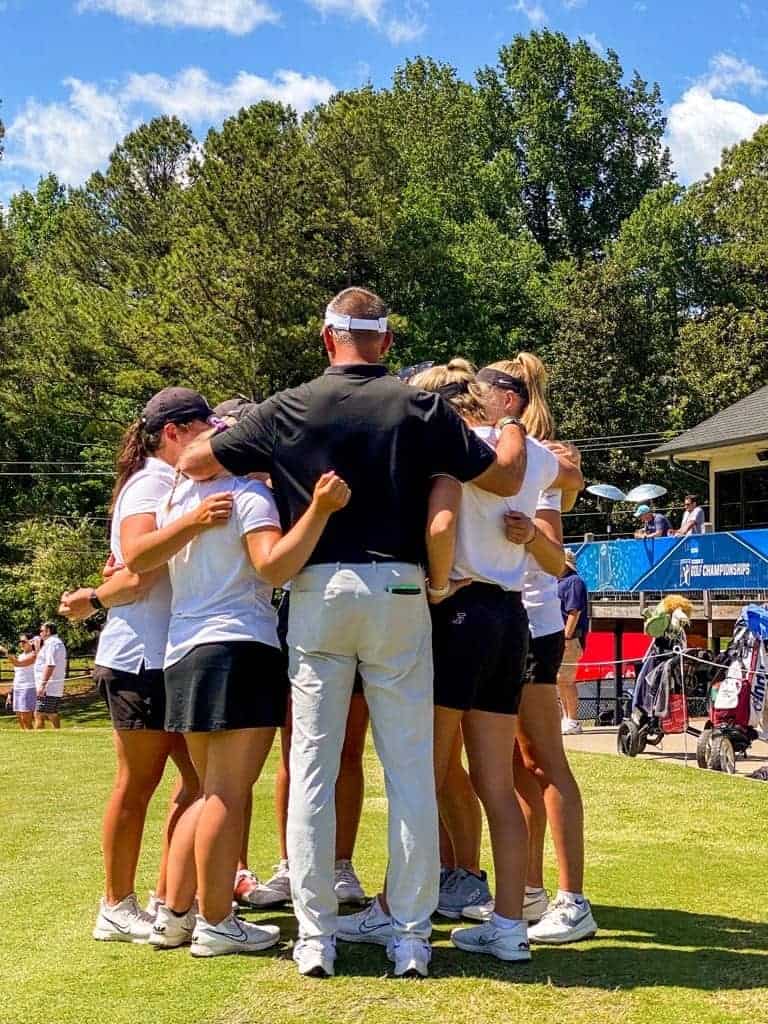
On a typical game day, we play 36 holes, so the day starts early. First we have a team breakfast together, usually eating some scrambled eggs, oatmeal or toast. Afterwards, we drive to the golf course in the team bus to be on the course 1.5 hours before the cannon start and warm up. Warming up here is very individual. Twenty minutes before the start we meet at the putting green to motivate each other and set the tone for the tournament day. After that, everyone goes to their hole where they will start. We play through 36 holes with no lunch break. During the round our coaches come by to support us, but also to bring food and drinks. After the round we finish the day with a team drill and head straight to dinner.
The atmosphere on such a tournament day cannot be compared to the one in Germany. We motivate each other at every opportunity and parents of the team support where they can. Team spirit is a completely new and great experience in the USA.
Train daily at the highest level and compete with up-and-coming athletes from around the world.
The USA offers you the best universities in the world: the academic content and methods are first-class and internationally recognized.
Take advantage of this unique opportunity to develop personally in a short period of time: gain experience with other cultures and learn perfect English.
One thing is for sure: You will stand out positively for future employers with your international education.
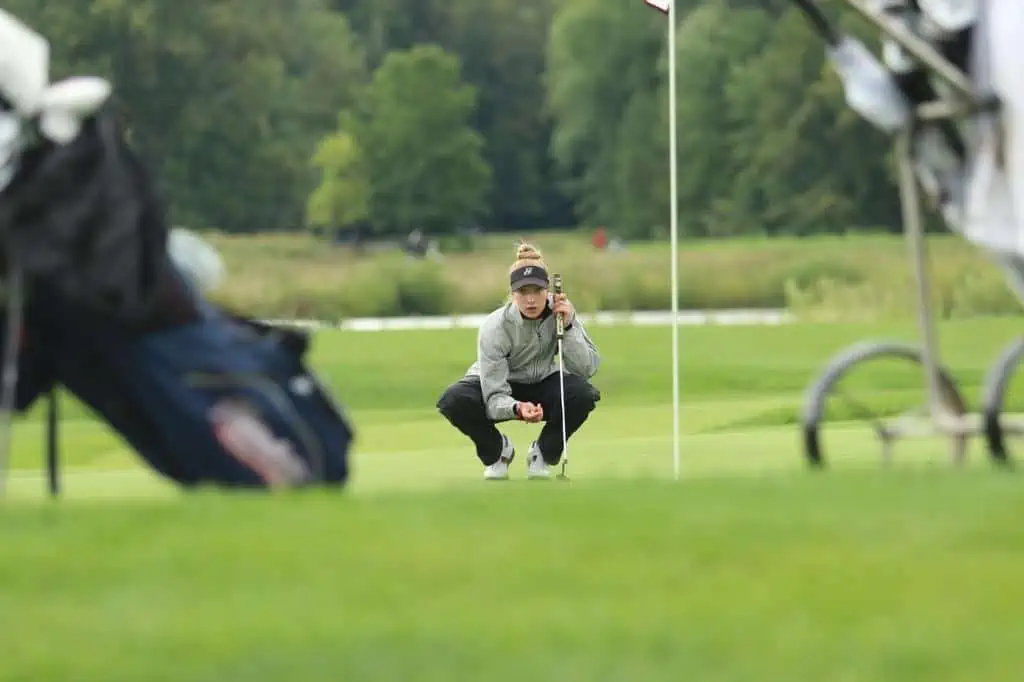
At the University of Indianapolis, I had access to a physical therapist/athletic trainer at all times. They help after tournaments with recovery and especially with injuries or prevention of injuries, which, however, do not occur as much in golf as in other sports.
Looking back, I have developed a lot during my time in the US, be it on the golf course, in college, but also on a personal level. That’s why I’m very grateful for all the people I’ve met during my time here and especially for my team and my coaches, who have shaped me a lot over the years. Of course, like everywhere else in life, there are ups and downs here, but that’s exactly what the team and the coaches are there for, to help me overcome them. Through the time as a student-athlete, you make a lot of memories with the team and coaches in training, in the gym, on trips, and at tournaments, making friendships for life. Therefore, I can only strongly encourage everyone not to miss this opportunity.
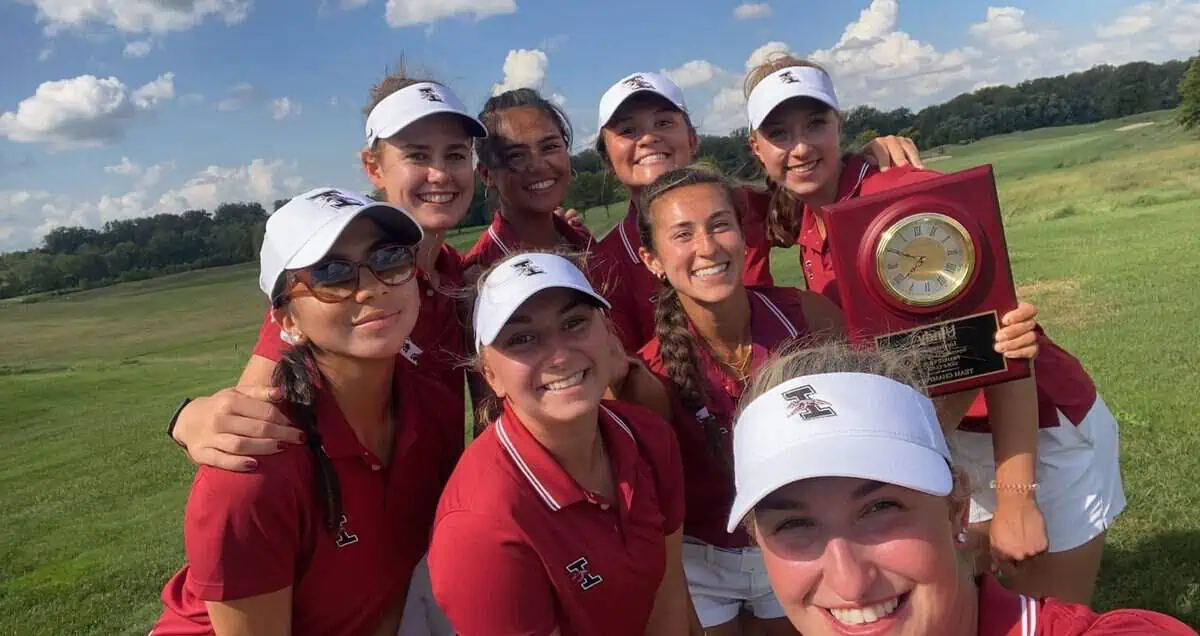
The opportunity to combine and coordinate sports and studies to this extent is not available in any other country. Athletes don’t have to give up their sport for their education, but neither do they have to give up their education for their greatest passion – sports. In addition, friendships are made for life through all the shared experiences and memories in training, traveling, and during tournaments. College sports in the U.S. can also open up an immense amount of doors, which you wouldn’t have thought possible before. Since this basically applies to almost all sports, I can only recommend every athlete not to miss this experience.